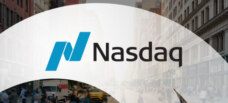Marketers say a lot of things. We all say we want to engage our audiences, give them compelling content and event experiences that inspire and educate. But, at the end of the day, not all engagement is created equal.
In fact, depending on the type of engagement you’re hoping to drive with your audience, you must use three types of engagement within your event.
Why Marketers and Event Teams Need a Shared Language

However, an issue arises: marketers and events teams don’t have a common language or way to discuss how to drive certain types of engagement in events.
Instead, both sides often default to event format types to discuss engagement — and that is missing the point. Teams should not focus on the container for the engagement over the engagement itself.
Three types of engagement must be created, and an event on its own does not equal engagement.
Start With Engagement Needs First, Event Type Second

We need to start with the engagement we’re looking to create in mind — with what audiences require or are looking to get out of the event — and set up events in a way that provides better experiences for audiences
By first focusing on the engagement we want to drive, marketers and events teams can easily get out of the event type conundrum.
For example, “We have to run a webinar,” or, “We have to run a roadshow,” leads to subpar events focused on setting a tactical goal — simply producing something — rather than focusing on what’s driving the audience experience.
The Three Engagement Types Marketers Must Know

To elucidate the different types of engagement teams should drive, the ON24 Center for Marketing Transformation splits engagement types into three themes:
-
- Consumption: This is when there is a hierarchy of presenters to the audience. The audience is mainly present to be informed and take in the information that the presenter(s) are sharing.
- Participation: This is where presenters and audience members interact directly and without a hierarchy between both. Everyone is on a level playing field as far as participation. Moderators are present to direct the flow of conversation and facilitate digital engagement.
- Networking: This is when there is no moderator or presenter directing audience interaction. Every event participant is empowered to engage with each other in conversation. The peer-to-peer nature of this engagement type allows for natural conversation flow without a strict agenda.
These three types of engagement require different techniques to ensure audience experience and participation are maximized. Failure to use appropriate techniques can lead to a poor and disjointed audience experience and a lack of insight from a marketing perspective.
How To Match Engagement Techniques to Engagement Type

Engagement Type |
Engagement Techniques to Utilize |
| Consumption |
|
| Participation |
|
| Networking |
|
By starting with the goal of the engagement you’re trying to drive with an experience, marketers and events teams will be able to better architect the experience itself.
These three types of engagement using this approach is critically important when creating events that have multiple sessions and additional engagement goals. Each session should be aligned with an engagement type so that the sessions will be as impactful as possible and create the appropriate variety for audiences.



